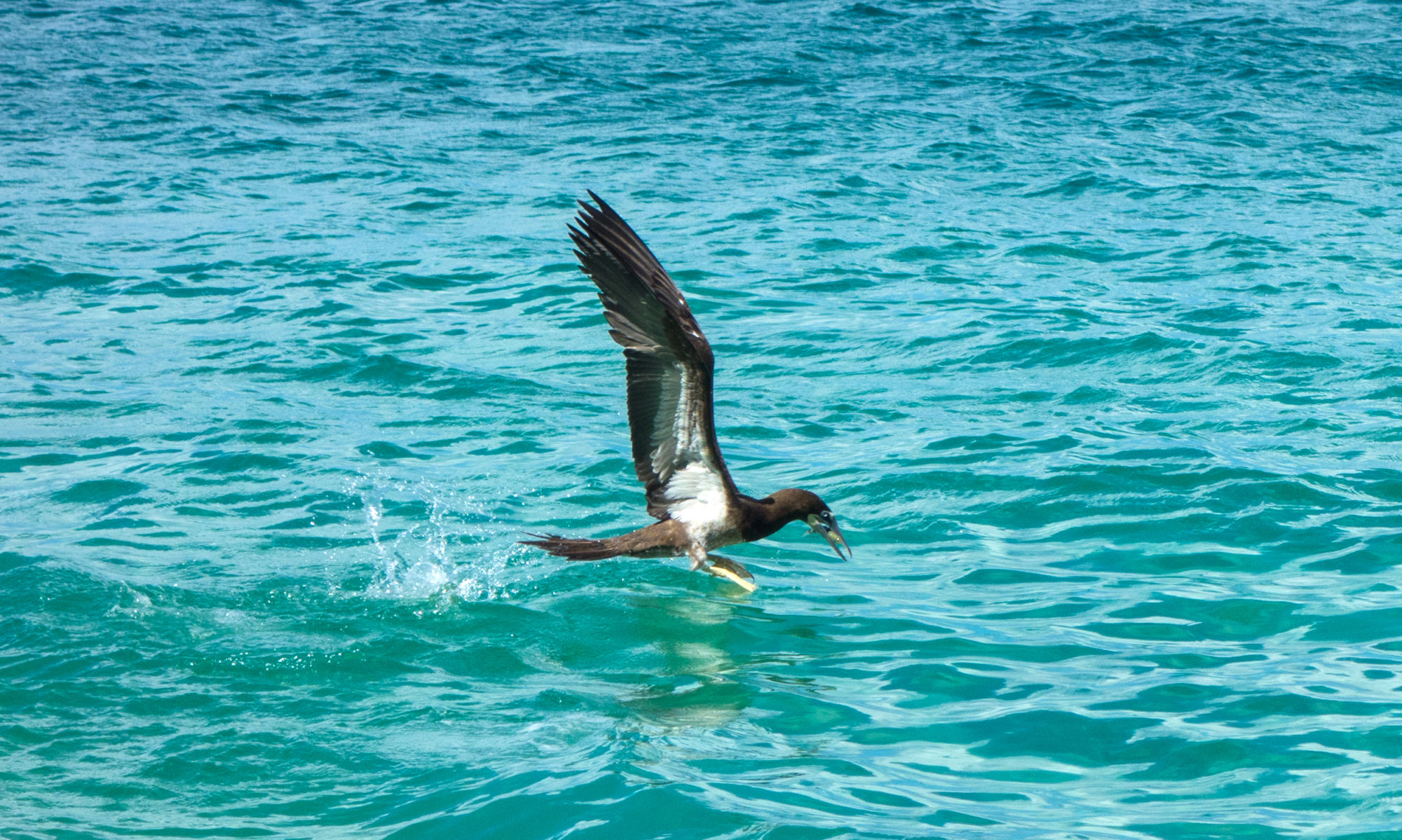One day Mac picked me up in his mother’s land-rover to take me to Spring Bay, a part of Bequia I had not yet explored. I had been to Princess Margaret and Lower Bay beaches, both of which faced the harbor on the west side of the Island. Today I would be spending the day on the east side and was looking forward to it.

Climbing into the land-rover with my mask and snorkel I noticed that Mac had brought a spear-gun, something that I would in the near future be buying for myself. He told me there were lots of reefs out at Spring and that reef fish make the best Boileen. When I asked him what “Boileen” means he smiled and said, “just wait and see!”.
The drive out to Spring did not take very long, but how long can a drive take on an Island just seven square miles in size? Mac veered off the road and drove through a coconut grove, steering around fallen nuts and palm branches as well as the occasional cow. We parked by the sea and were greeted by several people busy setting up for a picnic on the beach. The men were assembling diving gear while the women put together a make-shift kitchen.

The men went straight to work and it was obvious to me that fishing was a “man thing”. Being a woman my job would be confined to the kitchen. Ah well. I was slowly learning how to cook West Indian food and focused my attention on what the women were doing. There was a massive pot half-filled with sea-water sitting over a wood fire, and boxes filled with provisions were being unpacked. The ladies welcomed me warmly, and were kind enough to slow down their speech when talking to me. I was still having difficulty with the local dialect, and when the ladies chatted amongst themselves it was impossible for me to follow the conversation.

I wasn’t much help with the food preparation that day, everything being peeled was foreign to me. There were mounds of tannias and eddoes with their rough skins as well as yams, breadfruits and green bananas. Tannia, eddoe and yam are starchy root vegetables referred to as “provision”. Breadfruit grows on a tree and is a good potato substitute. Green bananas are called “lacatan” and are delicious in soups.
Some of the ladies were busily kneading some dough for dumplings. They told me that a boileen without dumplings just wouldn’t be right, it had to have plenty of dumplings. I asked, “what is a boileen?”. They laughed and said, “ you wait and see!”

Soon the water was boiling and the men were busy cleaning fish on the beach. While the ladies fed the tannias, eddoes, yams, breadfruit and lacatan into the pot I wandered over to inspect the “catch”. The reef fish were beautiful, especially the parrot fish, and soon they would be lunch. By now it was mid-afternoon and I was getting really hungry.
The big pot was bubbling as one by one the fish and dumplings were added. I had never seen such big dumplings, they were the size of a tea saucer! There is a reason why West Indian dumplings don’t float. They can’t! The crowning touch to the pot made me shudder …..a large dollop of the horrible canned butter from Denmark. This was the only butter sold on the Island, bright orange in color with a somewhat rancid taste.

Lunch was served up in calabashes, the hollowed-out gourds making perfect receptacles for the boileen. I gazed at my steaming food, and once I got over having fish heads in my food I ate until I thought I would explode. I had never tasted anything so utterly delicious in my life!


